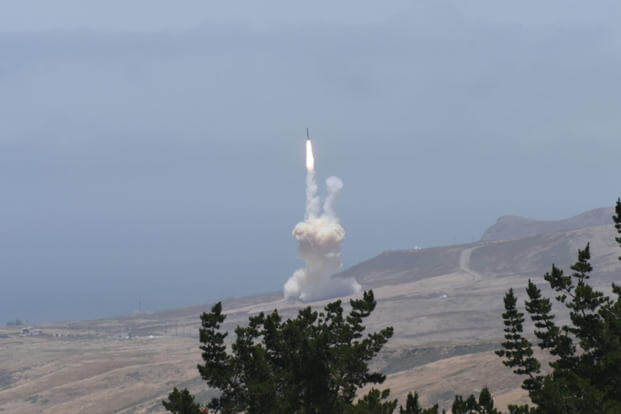A hit-to-kill test over the Pacific showed U.S. missile defenses can destroy intercontinental ballistic missile targets using decoys and protect against an eventual North Korean threat, the head of the Missile Defense Agency said Wednesday.
Vice Adm. James Syring said Tuesday's test in which an interceptor fired from California "completely obliterated" an ICBM-type target launched from Kwajalein Atoll would have worked "if it had been a North Korean launch."
He said the Ground-based Midcourse Defense missile launched from a silo at Vandenberg Air Force Base hit the ICBM target head-on in space northeast of Hawaii. Syring also confirmed that the test in the increasingly expensive and expanding missile defense program cost about $244 million.
"I was confident before the test that we had the capability to defeat any threat that they would throw at us," Syring said in a phone briefing to the Pentagon. "And I'm even more confident today after seeing the intercept test yesterday that we continue to be on that course."
North Korean dictator Kim Jong-un has boasted that his missile programs will eventually produce an ICBM capable of hitting the U.S. mainland with a nuclear warhead.
Missile technology analysts have estimated that North Korea might have a nuclear-capable ICBM by 2020 but Syring said U.S. defenses were keeping ahead of the threat.
Syring said the test showed that the U.S. was "ahead of where we think the threat will go" from North Korea for the next several years. "The interceptor that we flew yesterday certainly keeps pace with and I would actually say helps us outpace the threat through 2020," he said.
Syring also pushed back against critics who have charged that the GMD tests thus far have lacked realism since the targets did not deploy decoys and the interceptor crews knew when and where the target would be launched and possibly even the trajectory.
However, Syring said decoys were used in Tuesday's test and in some previous tests, contrary to what he said were published reports that GMD was not going up against decoys.
He also said that the interceptor teams at U.S. Northern Command working at consoles in Colorado Springs knew where the target would be launched from but only had a launch window of several hours on when the target launch would take place.
Tuesday's intercept was the first live-fire test against a simulated ICBM for the the GMD, managed by Boeing Co (BA.N).
North Korea has greatly increased its own tests of short and medium-range missiles in recent months and on Monday, Kim Jong-un supervised another launch, the North's Korean Central News Agency reported.
Kim said the launch was a precursor in the development of larger missile "to send a bigger gift package to the Yankees," KCNA said.
-- Richard Sisk can be reached at Richard.Sisk@Military.com.
In a first, the Defense Department May 30, 2017, destroyed a mock intercontinental ballistic missile over the Pacific with a new hit-to-kill vehicle meant to protect the homeland against the growing threat from North Korea. (Pentagon video)





























